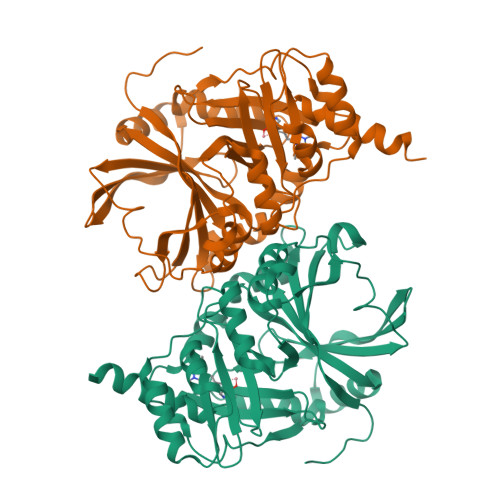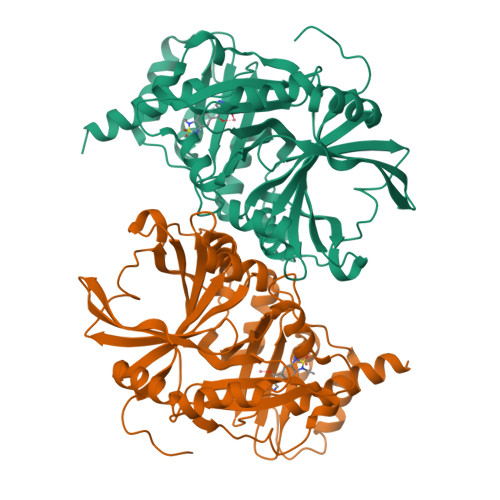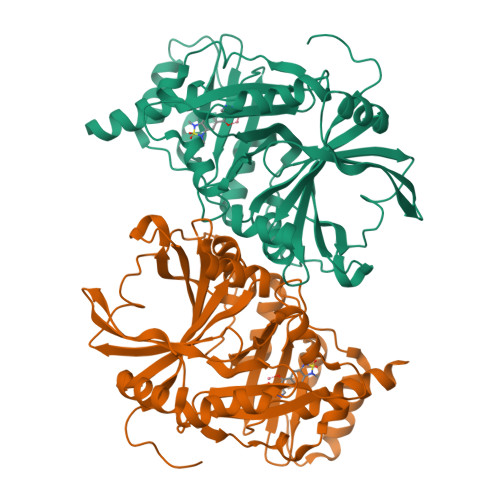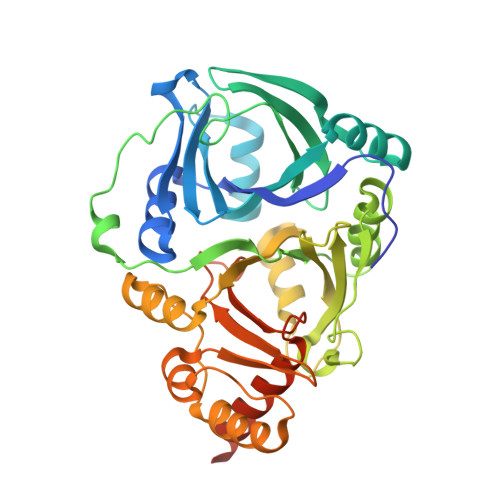Structure-based discovery of pyrazole-benzothiadiazole hybrid as human HPPD inhibitors.
Dong, J., Xiao, H., Chen, J.N., Zheng, B.F., Xu, Y.L., Chen, M.X., Yang, W.C., Lin, H.Y., Yang, G.F.(2023) Structure 31: 1604
- PubMed: 37794595
- DOI: https://doi.org/10.1016/j.str.2023.09.005
- Primary Citation of Related Structures:
8IM2, 8IM3 - PubMed Abstract:
4-Hydroxyphenylpyruvate dioxygenase (HPPD) has attracted increasing attention as a target for treating type I tyrosinemia and other diseases with defects in tyrosine catabolism. Only one commercial drug, 2-(2-nitro-4-trifluoromethylbenzoyl)-1, 3-cyclohexanedione (NTBC), clinically treat type I tyrosinemia, but show some severe side effects in clinical application. Here, we determined the structure of human HPPD-NTBC complex, and developed new pyrazole-benzothiadiazole 2,2-dioxide hybrids from the binding of NTBC. These compounds showed improved inhibition against human HPPD, among which compound a10 was the most active candidate. The Absorption Distribution Metabolism Excretion Toxicity (ADMET) predicted properties suggested that a10 had good druggability, and was with lower toxicity than NTBC. The structure comparison between inhibitor-bound and ligand-free form human HPPD showed a large conformational change of the C-terminal helix. Furthermore, the loop 1 and α7 helix were found adopting different conformations to assist the gating of the cavity, which explains the gating mechanism of human HPPD.
Organizational Affiliation:
National Key Laboratory of Green Pesticide, International Joint Research Center for Intelligent Biosensor Technology and Health, Central China Normal University, Wuhan 430079, P.R.China.






















